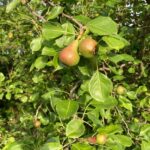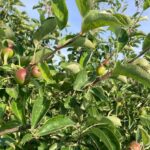Strawberry Growers: Navigating the Challenges of Neopestalotiopsis Disease If you’re expecting plug plants for your strawberry crops, you’ve likely heard about the emerging threat of Neopestalotiopsis disease. For those unfamiliar, I recommend reading Dr. Phil Brannen’s article, “Dramatic Neopestalotiopsis Disease in Strawberry Tips and Plug Plant Production Nurseries“ from the University of Georgia Extension. Recently,[Read More…]
Strawberry
In a press release on August 6, 2024, EPA announced the emergency suspension of all registrations of DCPA (marketed and sold as Dacthal® herbicide). The full press release can be viewed here: EPA Issues Emergency Order to Stop Use of Pesticide Dacthal to Address Serious Health Risk | US EPA Why did EPA do this?[Read More…]
Tissue analysis is the most reliable means of determining plant nutritional status. Combined with soil testing, tissue analysis can help pinpoint the source of problems and determine what measures may be needed to ensure proper nutrition of the crop. Tissue analysis samples should be collected at the appropriate time to give the most meaningful results.[Read More…]
This year, the strawberry season throughout Indiana seems to be early by about 10 days to 2 weeks, regardless of the production system. In southern Indiana, I heard the harvest lasted from mid/late April until mid-May in some fields. In central I ndiana, the harvest started in mid-May and is nearing its end in early[Read More…]
Everything here at the Meigs Horticulture Farm in Lafayette, Indiana seems to be off to a great start of fruit development. We have had an abundance of Strawberries the last two weeks and will for the next few weeks. We were able to find a handful of peaches on our trees.. no more than a[Read More…]
According to the newly released 2022 Census of Agriculture, Indiana has 248 farms growing strawberries, a 25% increase from 2017 when there were 199 such farms. This rise is particularly notable because the number of strawberry farms had decreased from 250 to 199 between 2012 and 2017. Despite the increase in the number of farms[Read More…]
A new episode of the Strawberry Chat podcast is available. In this episode, we talked with Dr. Marvin Pritts from Cornell University. We discussed the new edition of the Strawberry Production Guide for the Northeast, Midwest, and Eastern Canada. Dr. Marvin introduced us to the plasticulture day-neutral strawberry product system he has been researching recently.[Read More…]
As we head into the strawberry season, I anticipate more questions from growers when it comes to pests that directly damage the fruit. One that was reported recently was the Strawberry sap beetle. This beetle belongs to the family Nitidulidae, which are broadly referred to as sap or picnic beetles. The Strawberry sap beetle overwinters[Read More…]





